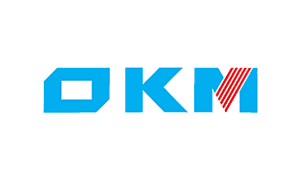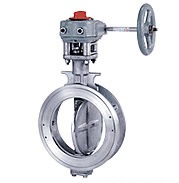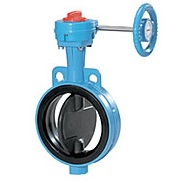Case Study - OKM CO., LTD.
Visualization of the processes of the entire factory has been achieved.
Founded in 1902 as a manufacturer of working tools specialized mainly in valve production, OKM has been working on cutting-edge product development since 1952, based on “creating products that please our customers.” The company provides high-performance, high-quality, high-reliability valves to various fields such as air conditioning equipment, chemical industry, steel industry, shipbuilding, petroleum, desalination plants, food industry, government offices, etc.

Brief information about the company:
Name: Sumico Lubricant CO., LTD.
Number of Employees: 113
Headquarters Location: Tokyo
Founded in 1957 March
Industry: Chemical Industry
Background
Before introducing the current system, the company used a general-purpose platform for salary, sales, purchasing, and financial management systems developed internally. Regarding manufacturing management, only inventory and backlog management functions were in operation. Since the system was created by the company internally, it was customized based on the requests of the departments that would use it. As a result, the system expanded excessively, and the data was decentralized, resulting in an inconsistent, so-called spineless system.
While continuing to operate the system that had become inefficient as described above, in 2004, the top management decided to:
1) Build a core system that could respond to future increases in sales with a small number of people
2) Eliminate the inefficiency by centralizing the scattered data
3) Implement a manufacturing management system that would enable visualization of inventory, lead time shortening, and cost grasping.
A new system concept was launched based on these requirements. In order not to repeat the failure of the previous management system, OKM started to search for a suitable system actively.
Selection criteria for a new system
Regarding a new system, the company consulted with its management consultant. They were advised to proceed with system construction based on the manufacturing management system. Then, OKM chose a SI vendor that builds the system in a scrap&build way and also chose two manufacturing management packages. There were concerns about whether it was a good idea to build a new system from zero, considering the previous experience. Ultimately, they decided to:
1) Build a core system based on a manufacturing management package with a solid core.
2) Improve internal business processes by using the core system to improve efficiency further.
Based on the decisions mentioned above, the company researched a lot of packages, including packages introduced by management consultants and other companies. Eventually, the Factory-ONE hybrid edition that handles both MTO and repetitive production was chosen. The primary deciding factor for going ahead with Factory-ONE was that the essential functions met OKM’s requirements. Above all, it was possible to customize the system in-house (open source).
Since the company initially developed the system in-house, they wanted to use the package for the core functions and then develop the branches by themselves, considering costs. In that sense, open source was a great advantage when selecting a system. Thus, it was decided that the next system would be built with Factory-ONE as the core system, and the project started.
Challenges while implementing a new system
Several months have passed since the kick-off of the implementation, and in March 2006, the customization program was completed. Master registration was started, but the system implementation was highly challenging due to two significant factors. The first factor was the start-up project of the Chinese factory, which was running simultaneously with the new system implementation project. Since the launch of the Chinese factory was a top priority project that was expected to bear the fate of the company in the future, organizational changes were made, and some of the main members of the system replacement project were assigned to the factory launch project. With the small number of project members left, we managed to register the master, helped the staff understand the new system and acquire operational skills, and provided education and guidance to the field workers. However, due to lack of labor, education and direction did not fully cover all field workers. Hence, the system replacement project started with fewer members than planned.
The second was a parallel operation of the old system. Although some functions were operating, they were in a state far from the original purpose and expectations of implementation. The parallel process was carried out in a state where education and guidance could not be thoroughly conducted for all members. Therefore, it was not possible to switch operations well at the site, and there were also cases of double data registration, so the implementation of the new system was dragging on.
In the long run, the Chinese factory launch was settled down, and the new system implementation project that had been dragging on was restarted. The first thing done when restarting was to clarify the gap between the goals set at the beginning of implementation and the current situation, identify the problems that made the project drag on and consider countermeasures. As a result, we decided to increase the number of project members by three and rebuild the operating system. The three staff members thoroughly learned and understood the Factory-ONE and then shared the knowledge acquired with the actual work site. Moreover, instead of simply providing operational education and guidance, we kept giving advice and education until everyone gained an understanding of the significance of the new system for the company and employees.
As a result of the activities of such a dedicated staff, the accuracy of master registration improved after half a year, and the understanding of the new system in the field and awareness of the importance of the new system increased significantly. Then, in July 2007, we could integrate the operations of the old system into a new one.


Benefits and Results
1) Sales have increased significantly compared to previous years. In addition, the system can be operated without additional staff because the efficiency of handling administrative tasks has been dramatically improved.
2) The new system enabled data centralization.
3) Inventory waste was reduced by understanding the inventory state. Due to the many useful functions such as MRP calculation, export of various documents, etc., a significant lead time was achieved.
4) The company managed to understand cost generation much better than before.
After all, the visualization was a significant benefit, allowing the company to see and grasp the status of internal processes within the factory in numbers, tables, graphs, etc.

